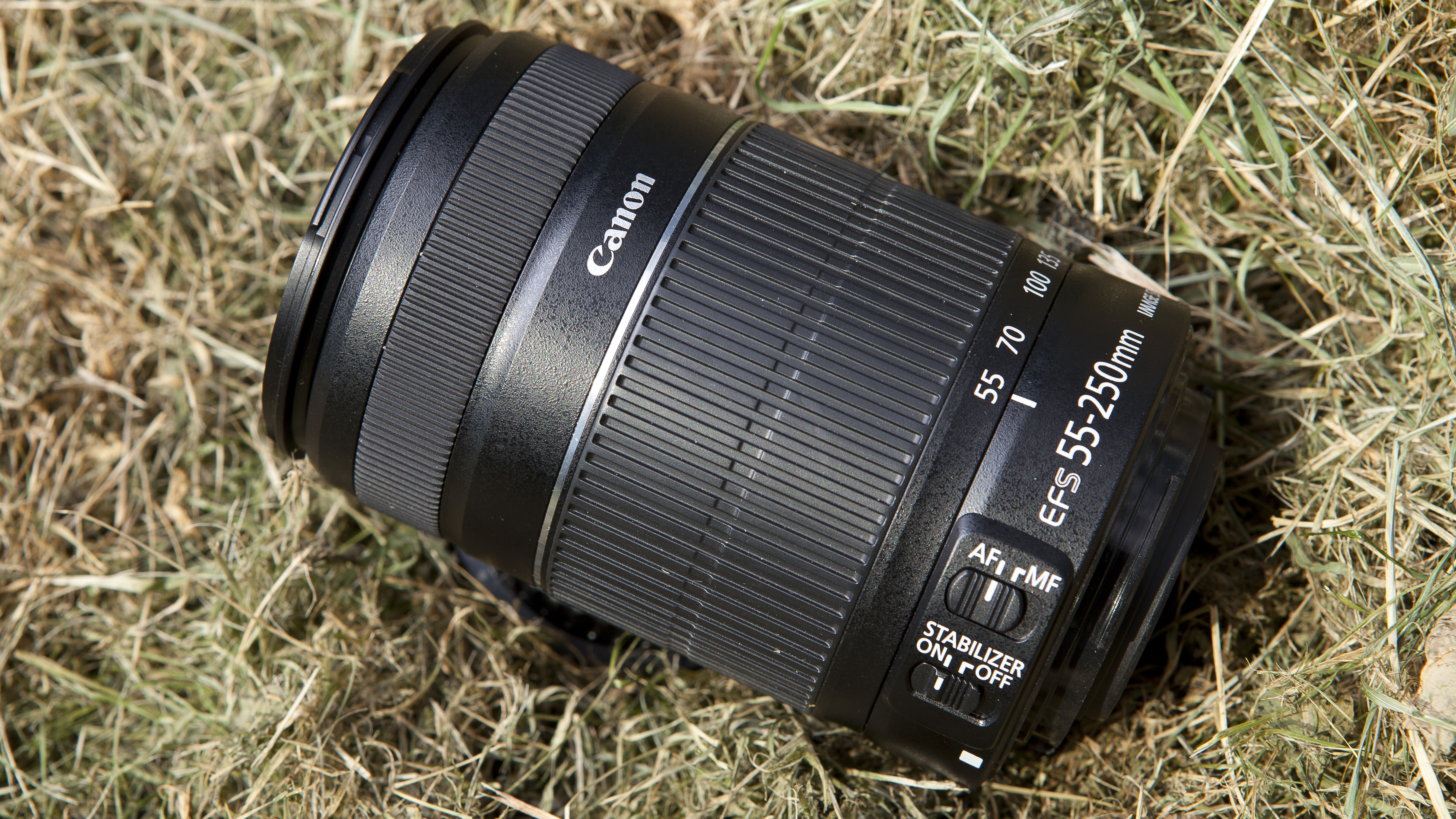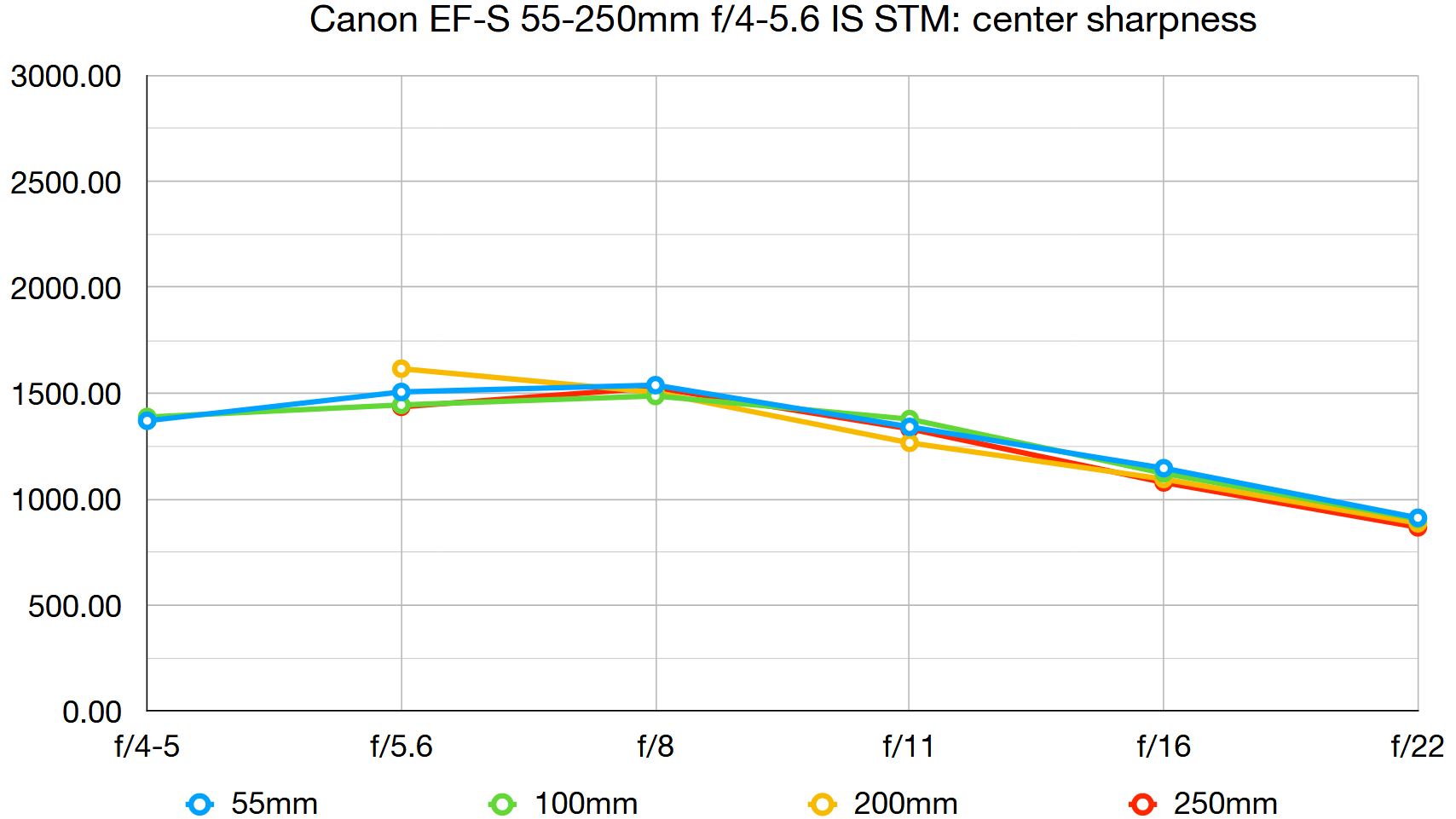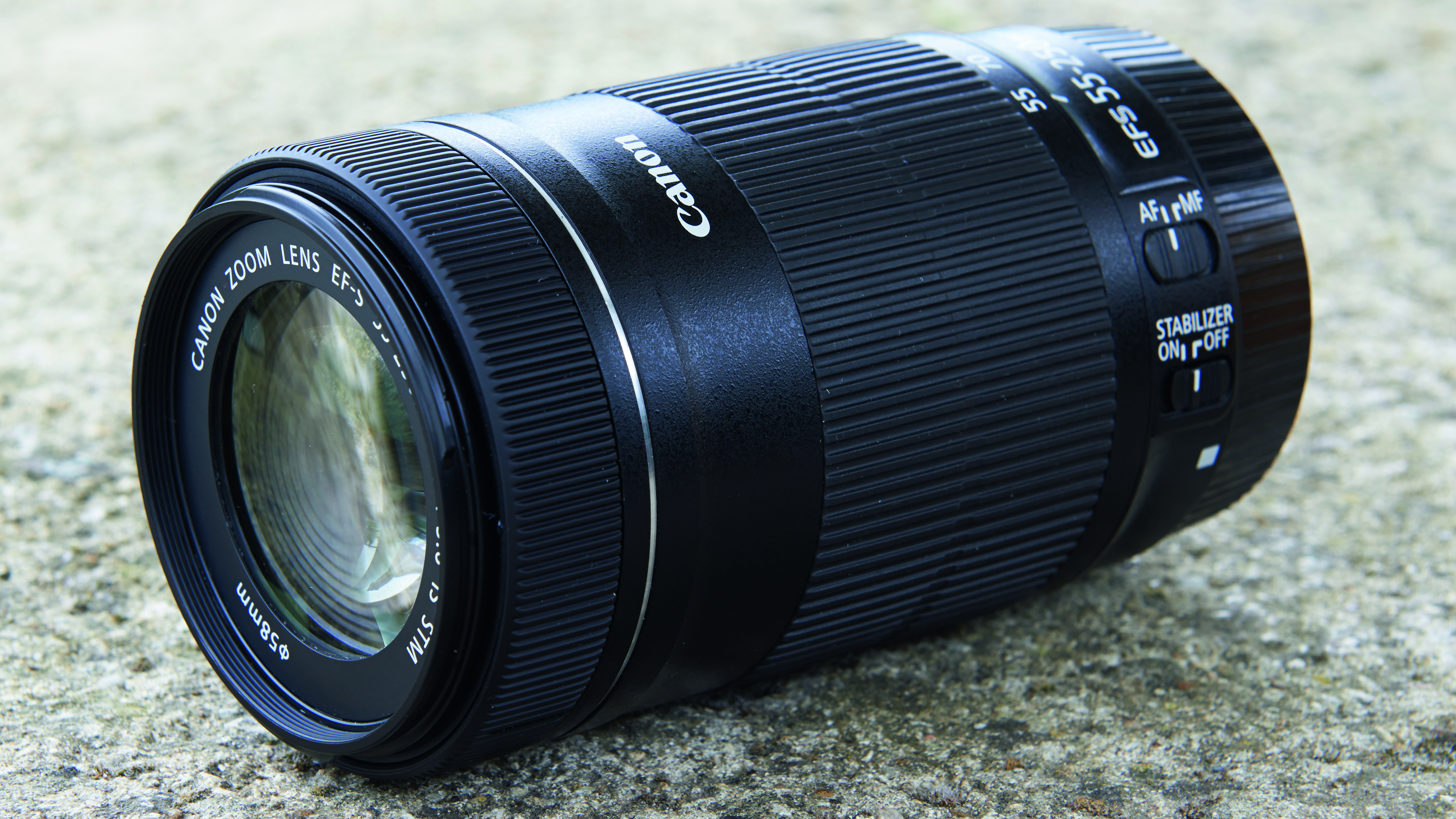Digital Camera World Verdict
With a new and improved optical design and a faster, near-silent autofocus system, the ‘IS STM’ edition of this lens is much improved compared with the original version. Designed for Canon’s APS-C format DSLRs, it’s quite compact and lightweight, yet offers a useful ‘effective’ zoom range of 88-400mm in full-frame terms. All in all, it’s a good telephoto zoom if you like to travel light.
Pros
- +
Compact and lightweight
- +
Good ‘effective’ telephoto reach
- +
3.5-stop image stabilizer
Cons
- -
Plastic mounting plate
- -
No weather-seals
- -
Hood sold separately
Why you can trust Digital Camera World
Designed for APS-C format DSLRs, the Canon EF-S 55-250mm f/4-5.6 IS STM can also be used on both APS-C format and full-frame mirrorless EOS M and EOS R system bodies, via their respective EOS mount adapters. Larger and heavier than the Canon EF-M 55-200mm f/4.5-6.3 IS STM, this one has more traditional DSLR-type styling, with physical switches for AF/M focusing modes and stabilization on/off, as well as chunkier rubberized grips for the zoom and focus rings.
Specifications
Mount: Canon EF-S
Full-frame: No
Autofocus: Yes
Stabilization: Yes
Lens construction: 15 elements in 12 groups
Angle of view: 27.8-6.25 degrees
Diaphragm blades: 7
Minimum aperture: f/22-32
Minimum focusing distance: 0.85m
Maximum magnification ratio: 0.29x
Filter size: 58mm
Dimensions: 70x111mm
Weight: 375g
Key features
Although nearly 50 per cent heavier than the Canon EF-M 55-200mm f/4.5-6.3 IS STM, the EF-S model adds an extra 50mm in telephoto length, with an overall zoom range that’s equivalent to 88-400mm in full-frame terms. It also has a slightly faster aperture rating, shrinking to f/5.6 rather than f/6.3 at the long end. Similarities between the two lenses include fast and virtually silent stepping motor-driven autofocus and 3.5-stop image stabilization. Both also have weight-saving plastic mounting plates, which should prove sufficiently robust but aren’t as durable as metal mounts.
Compared with the previous edition of the EF-S 55-250mm, the new version has a more complex optical path with three extra elements, including the addition of a UD (Ultra-low Dispersion) element. This aims to reduce chromatic aberrations while boosting sharpness and contrast. The basic electric autofocus motor of the previous edition was much inferior.
Performance
Levels of center-sharpness are pretty good throughout most of the zoom range and sharpness generally holds up quite well towards the edges and corners of the frame. There’s very little in the way of color fringing and distortions are pretty low as well. Overall, this lens is a solid performer that’s well matched to Canon’s APC-S format DSLRs - and its focal range makes it a perfect partner to the Canon EF-S 18-55mm f/4-5.6 IS STM kit lens.
Lab results
We run a range of lab tests under controlled conditions, using the Imatest Master testing suite. Photos of test charts are taken across the range of apertures and zooms (where available), then analyzed for sharpness, distortion and chromatic aberrations.
We use Imatest SFR (spatial frequency response) charts and analysis software to plot lens resolution at the center of the image frame, corners and mid-point distances, across the range of aperture settings and, with zoom lenses, at four different focal lengths. The tests also measure distortion and color fringing (chromatic aberration).
Sharpness:
Center-sharpness is pretty respectable, only dropping off a bit in the shorter section of the zoom range when using the widest available apertures. Mid/edge-sharpness is less impressive at the shortest focal length.
Fringing:
There’s fairly little in the way of color fringing at almost every combination of focal length and aperture setting, with the exception that it can be quite noticeable when shooting wide-open at 250mm.
Distortion:
The best camera deals, reviews, product advice, and unmissable photography news, direct to your inbox!
When uncorrected in-camera, barrel distortion can be slightly apparent at 55mm for there’s comparatively little pincushion from 100mm onwards, as you extend through the zoom range.
Verdict
With a new and improved optical design and a faster, near-silent autofocus system, the ‘IS STM’ edition of this lens is much improved compared with the original version. Designed for Canon’s APS-C format DSLRs, it’s quite compact and lightweight, yet offers a useful ‘effective’ zoom range of 88-400mm in full-frame terms. All in all, it’s a good telephoto zoom if you like to travel light.
Read more:
• Best camera lenses to get
• Best Canon lenses
• Best Nikon lenses
• Best Sony lenses
Matthew Richards is a photographer and journalist who has spent years using and reviewing all manner of photo gear. He is Digital Camera World's principal lens reviewer – and has tested more primes and zooms than most people have had hot dinners!
His expertise with equipment doesn’t end there, though. He is also an encyclopedia when it comes to all manner of cameras, camera holsters and bags, flashguns, tripods and heads, printers, papers and inks, and just about anything imaging-related.
In an earlier life he was a broadcast engineer at the BBC, as well as a former editor of PC Guide.








